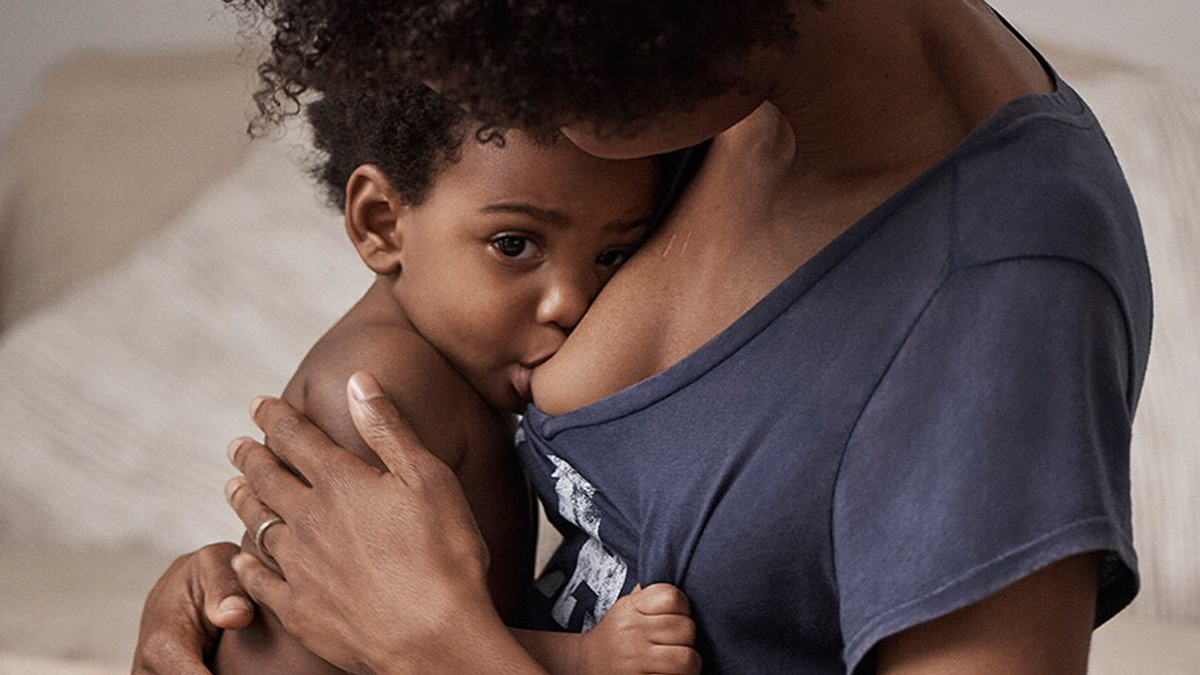Viral Gap ad helps to normalize public breastfeeding
 GAP / Instagram
GAP / InstagramGap’s new sleepwear ad, which features American-Nigerian model Adaora Akubilo breastfeeding her toddler, is a huge step forward towards normalizing women’s public breastfeeding.
For some time, public breastfeeding has been a controversial act, despite the fact that the right to public breastfeeding in Canada is protected under the Charter of Rights and Freedoms. Women may still face discrimination for public breastfeeding, including being asked to leave public establishments.
Blocking public breastfeeding, however, helps to reinforce several harmful stereotypes about the female body.
One of the primary arguments of those who oppose public breastfeeding is that breastfeeding is an inherently unhygienic or “dirty” act. Usually, this is because the action involves exposing part of the breast, as well as bodily fluids, leading some opponents to compare it to acts like public defecation or intercourse. One opponent wrote, “conception is a natural act, but we don’t conceive in public.”
But the truth is, even when breastfeeding uncovered (as Akubilo does in the ad campaign), very little of the female body is actually visible. As well, breastfeeding is an act of survival, not an act of defecation, and definitely not an erotic act. Babies need to eat. They can’t simply wait for a more convenient time, or a more private place. Yet, opposing public breastfeeding suggests that women’s bodies are so “dirty” and “inappropriate” that women should put off feeding their children, use uncomfortable milk pumps, or use formula instead.
The Gap ad campaign also helps to desexualize the female body. The majority of representations of women’s bodies that we consume in media, especially in advertisements, are sexualized. Women wear scanty outfits, make suggestive comments, behave flirtatiously, or refer to totally non-sexual objects like cars or hamburgers in sexual ways. While there is nothing wrong with a woman choosing to own her sexuality by engaging in any of these activities (the last one might be a bit weird, but you do you), advertisements all too often suggest that women are inherently sexual in a way that men aren’t. They present women’s bodies as objects to be consumed.
This may come as a shock, but the primary purpose of breasts is not to seduce a mate or to function as a sexual body part. The primary purpose of breasts is to feed children.
Opponents of breastfeeding who claim men simply “can’t control” their “natural” attraction to women’s breasts fundamentally misunderstand a couple of things that happen when a woman breastfeeds. Firstly, this is not an erotic situation. The woman is (plainly) not attempting to engage sexually with any men who might happen to see her breastfeed. Secondly, this kind of thought assumes that women are responsible for sexual thoughts men might have about them—that’s totally false. Men are responsible for their own thoughts, and if a man can’t control his sex drive when around women feeding their children in public, he should probably get professional help.
By presenting Akubilo in a natural and intimate setting with her child, the Gap ad works against any mistaken beliefs that breastfeeding should be equated with sex, or that the female body is inherently a sexual object. Akubilo is advertising Gap’s sleepwear line, and dresses in casual, comfortable clothing that contrasts with the tight, uncomfortable, outfits women in advertising often wear.
Ultimately, portraying Akubilo and her son in an authentic mother-child moment helps to normalize breastfeeding in media and in public. By doing so, it is actually a feminist advertisement, because it rejects harmful stereotypes about the female body and its role in society. Hopefully, more advertisers, television shows, and films will follow the example to remove the negative stigma surrounding public breastfeeding once and for all.




